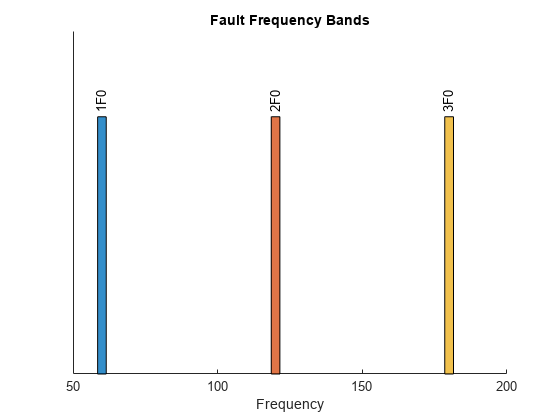Main Content
faultBands
Generate fault frequency bands for spectral feature extraction
Syntax
Description
FB= faultBands(F0,N0,F1,N1)FB, using the distance of the first sidebandF1from the fundamental frequencyF0.N1is the array of the sidebands aroundF0. IfF1is not specified, thenfaultBandssetsF1to 10 percent ofF0by default.N1is equivalent to the 'Sidebands' name-value pair. You can use the 'Type' name-value pair to specify separation between successive sidebands.
___= faultBands(___,Name,Value)allows you to specify additional parameters using one or more name-value pair arguments.
Examples
Input Arguments
Output Arguments
See Also
Introduced in R2019b





